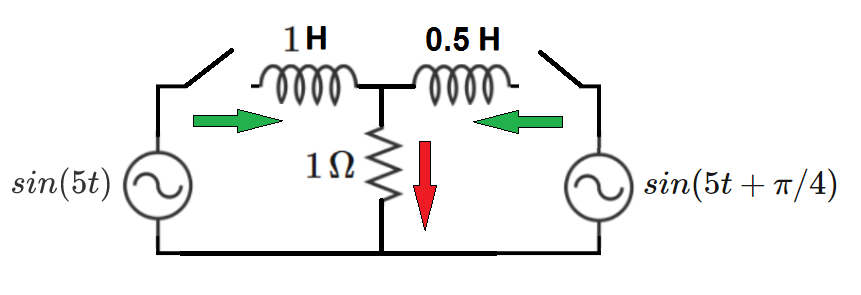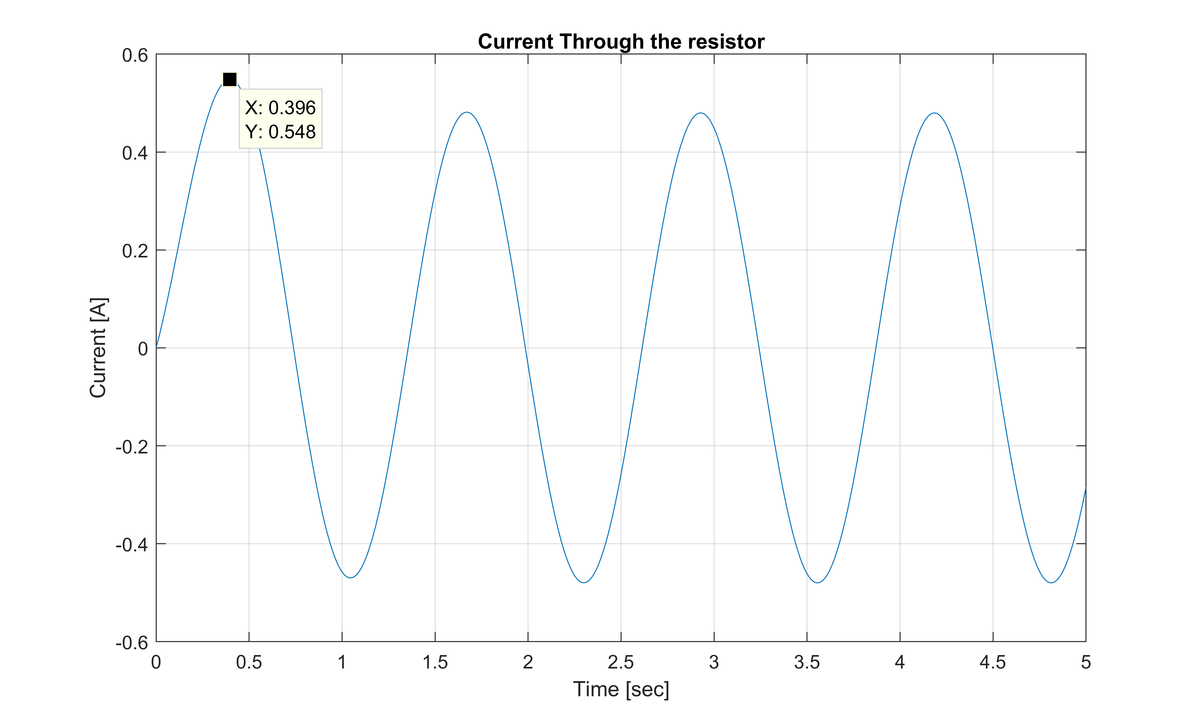Switching Onto a Fault
Both switches close at time . Prior to switch closing, both inductors are de-energized. What is the maximum instantaneous current which flows through the resistor? If this value is , give your answer as .

The answer is 548.
This section requires Javascript.
You are seeing this because something didn't load right. We suggest you, (a) try
refreshing the page, (b) enabling javascript if it is disabled on your browser and,
finally, (c)
loading the
non-javascript version of this page
. We're sorry about the hassle.
Consider the given circuit. The governing equations of this circuit can be determined using Kirchoff's current and voltage laws. The resulting system of paired differential equations turns out to be:
d t d i 1 = − i 1 − i 2 + sin ( 5 t )
d t d i 2 = − 2 ( i 1 + i 2 ) + 2 sin ( 5 t + 4 π )
Here, i 1 is the current through the 1H inductor while i 2 is the current through the 0.5H inductor. The current through the resistor is: i = i 1 + i 2
This system of ODEs can be solved analytically. However, I have chosen to solve them numerically. The currents i 1 and i 2 are both zero at t = 0 .
The solution for the current through the resistor looks as such:
From here, it can be concluded that the required answer is 548